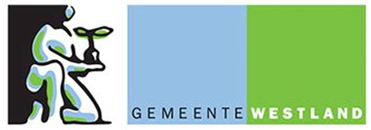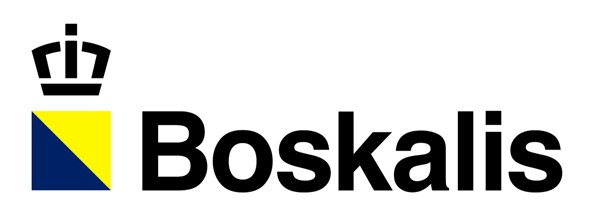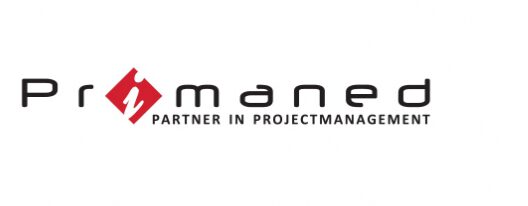Odesys
Confronting Complexity, Co-Creating Best-fit Solutions & Open Design Learning
Odesys - Open Design Systems
'A holistic, open design-learning approach to confronting complexity of seemingly insoluble problems. Odesys untangles wicked problems while balancing both individual and systems design freedom, ultimately achieving a best-fit within socio-physical reach.'

Odesys: the art of decision-making for a best-fit common purpose’
Why do we so often steer toward what only one party wants, navigating on the illusion of free choice? Why do conflicts of interest frequently end in a superficial compromise—where either what is desired proves impossible, or what is possible is no longer desirable? Why do decision-makers keep their cards close to their chest, preventing stakeholders from working together through a ‘best-for-common-purpose’ approach? And finally, why, in complex situations, do we tend to focus on a ‘curated solution’ from just one stakeholder—without asking what problem is actually being solved, or recognizing that their puzzle is part of a larger whole?
Current systems engineering and management sciences generally analyse conflicts well, but rarely offer a constructive way forward. As a result, society misses out on valuable opportunities for development, collaboration, and innovation. Odesys does. With a co-creative response, Odesys turns conventional decision-making right side up by integrating the fourfold power of systems thinking, design thinking, social thinking, and slow thinking into one synergistic whole— a deliberate art of decision-making, aimed at delivering an optimally fitting outcome.
Through an open-ended design approach, Odesys purposefully transforms current realities into desired outcomes, all within socially and physically feasible boundaries. It maps individual preferences and interests to determine—out of all possible solutions—the one with the highest aggregated preference value: a best-fit for and within the whole. To achieve this, Odesys employs the Preferendus, a neutral decision-support instrument. This tool generates best-fit solutions that synthesize both individual and systemic design freedom — a con-science of freedom from and for the whole. In doing so, Odesys creates an open space for constructive dialogues and makes a common ideal within reach.
The state-of-the-art Odesys methodology was developed under the leadership of Professor Wolfert at TU Delft. It has been internationally published and successfully applied in the infrastructure and built environment sectors. See below for Publications and References, including the scientific foundation: the Odesys-book with its accompanying scientific and industrial commendations. In addition, Odesys publishes its own works through ODL Press; see the most recent publications below. For an accessible introduction, the ShortOdesysStories on the Odyssee blog are recommended..
Odesys: for those who truly want to dissolve creative conflicts of interest
Are you a government agency, engineering firm, contractor, project developer, or another stakeholder involved in complex challenges within the built environment? Are you dealing with a challenge where multiple interests clash and various physical solutions are possible? Are you stuck in a cycle of trial and error? Or do you arrive at a solution but can’t shake the feeling: is this really the optimal outcome? You sense it can be better — but how?
Do you want to generate the best-fitting solution, develop an optimal ‘no-regret’ plan, or design a targeted mitigation strategy — at any stage of your project or programme’s development, engineering, or management? And do you want to truly address and resolve the creative conflicts within your organisation, especially when the complexity exceeds what human reasoning alone can handle?
Then Odesys offers a fast & smart, glass-box, and unbiased approach to arrive at the best-fit solution for your complex challenge. With a state-of-the-art methodology and powerful management-by-design tooling, Odesys helps you realise a well-considered, feasible, and widely supported solution. This does not lead to a weak compromise based on “majority rules” or the aim to “leave no one behind.” Instead, Odesys offers a best-fit synthesis aimed at maximizing well-being value for the whole.
Conflicts of interest are not only inevitable but form the very foundation of development — transforming destructive patterns into constructive outcomes. For everyone working on complex challenges — from project managers, policymakers, and designers to initiators and groups aiming to realize a best feasible plan, with and for each other — Odesys offers a unique solution. Odesys truly opens new doors where others stop at mere ‘open-doors’. The approach provides supportive modeling for planning, project and asset management, and spatial development—particularly as digital decision support for complex challenges in the built environment.
We guide you through this process by selecting a complex, real-world issue relevant to your organisation (your system-of-interest), and train professionals from your team to not only solve it—but also to handle similar problems independently in the future. In doing so, your people become Odesys professionals, gaining access to the Odesys network and platform—an inside track. Your organisation will gain a strategic edge, while contributing to the common good. Finally, ODESYS guarantees innovative learning through its Open Design Learning (ODL) concept, providing both in-company and in-university training programmes.
Over ODESYS cv
ODESYS cv was founded in 2024 by Rogier Wolfert. It emerged from a collaborative initiative by a group of (former) TU Delft students who, through their project and internship experiences at companies such as Total, Microsoft, and Boskalis, became enthusiastic about the potential of the Odesys methodology.
Rogier is currently the sole managing partner and collaborates with a network of independent Odesys professionals—young stars—to further apply, spread, and evolve the Odesys approach. Odesys is also actively advised by senior professionals from both industry (Fluor) and academia (TU Delft).
ODESYS provides in-company training and ‘learning & development programs op het gebied van Project-, Asset-, Engineering- en Conflictmanagement, based on a System or Problem of Interest (SoI/PoI) from within your organization. In addition, ODESYS offers in-university courses and masterclasses at MSc- en PhD-level — supported by a proven track record in academic education.
For further information, please contact: info@odesys.nl.

Here you will find the (e-)books and (e-)publications published by ODL Press, an imprint of ODESYS C.V. These are available only on request, either as open-access PDFs or as printed books with sufficient orders (on demand). For orders or password access to the publications, please contact info@odesys.nl.
Available publications:
- A.R.M. Wolfert (2025). Decision-Making, Decidedly an Art. ODL Press (e-book) To appear in UK. Now only in Dutch available – PDF.
- A.R.M. Wolfert (2025). Beyond the Illusion of Democratic Decision-Making – Building Together from Our Own Strength, an Ideal Within Reach. ODL Press (e-essay) – PDF.
- A.R.M. Wolfert (2024). Confronting Projects Complexity – designing towards a best-fit for common purpose. ODL Press (e-white paper) – PDF.
- A.R.M. Wolfert (2026). Confronting Projects Complexity – engineering project management by design. ODL Press (e-book). For a preview of this book – PDF.

Discover the essence of Odesys in this blog through nine short, standalone stories: the Short Odesys Stories (SOSs). Each story highlights a key aspect of the Odesys approach and places it in its context — unfolding its unique character through a series of captivating journeys: a true Odesys odyssey! The first story (‘Decision-Making right side up:…’) serves as the overarching introduction, with the following SOSs delving deeper into specific perspectives and themes. All of these SOSs are also published as LinkedIn-posts (only the SOSs that are available in UK):
- “Decision-Making Upside down & Right side up: Towards a common Ideal within Reach” This short story is about Odesys’ integrative Systems Thinking Social & Design Thinking Slow approach, which transforms closed, suboptimal decision enforcement into open and optimal decision-making. In this way, plans are forged with care and purpose, as Odesys crafts a constructive path toward feasible solutions that optimally serve all stakeholders — a best-fit-for-common-purpose within socio-physical reach: decision-making as a true art of fitting and measuring!
- “Unveiling The Illusion of Free Choice” This short story draws on the principles of ‘Design Thinking’ and shows that when you’re willing to let go of the solution at first, a design-driven approach can lead to the best dissolution for your challenge. If you don’t, you’ll be fooling yourself and settling for a suboptimal decision, instead of arriving at a best-fit for your problem by tapping into the full potential.
- “Everything of Value is Relative” This short story draws on ‘Thinking Slow’ and emphasizes that the only relevant parameter in decision-making is preference. Preference is a relative quantity, and decision-making that does not model it as such inevitably leads to non-valuable outcomes. Where there is a relative difference, movement emerges. Odesys bridges these differences and makes a meaningful difference, creating pure value.
- “Well-being: A Play of Liberty, Equality, and Unity” This short story draws on ‘Thinking Social’ and demonstrates how to forge a healthy plan for everyone’s well-being by applying the principles of social threefolding. Odesys expands on this by concretely integrating subject freedom (‘what one wants’) and object freedom (‘what is possible’). Only when no one is sidelined and everyone plays within the lines, using their own free space, can a team score optimally: a game of liberty, equality, and unity! (Note: currently available in NL only).
- “The Preferendus: A Compass of Value” This short story draws on ‘Design Thinking Slow’ — when you’re willing to let go of the current TOMTom and apply the Preferendus, you’ll find the best path for the entire group, rather than choosing the fastest route for one group member or weighing a limited number of possible routes through trade-off matrices, which could lead to a suboptimal outcome. Similarly, the Preferendus offers a best-fit-for-common-purpose solution for various other complex problems.
- “A Healthy Project: Start Together and Act from the Whole” This short story draws on ‘Systems Thinking Social’ — not the usual rhetoric of ‘aligning interests’ or ‘getting everyone on the same page,’ but decision-making as a game of with each other, for each other: that is the motto of Odesys. When you’re also willing to play with transparency and act from the whole, this leads to a healthy and satisfied project. In this way, the awareness of an ideal in reality becomes the true union of a team, resulting in a best-for-project & people outcome.
- “Is This Not Your Opinion, but Rather That of the Model” This short story explores Odesys’ perspective on modeling. Odesys’ modeling is not merely ‘the opinion of a model,’ but instead integrates multiple human perspectives within its models. In its ‘normative’ optimization models, where the performance of the object and the preferences of the subject are intertwined, Odesys employs ‘artful’ intelligence rather than just ‘artificial’ intelligence (AI). In this way, the qualitative strength of human experience and judgment is fused with the quantitative (computational) power of AI, creating an open-ended modeling approach for achieving the best fit in the present.
- “Design: A Con-Science of Freedom” This short story explores Odesys’ perspective on design as a transformative process from mind-to-matter, a synthesis of ‘what is physically possible’ and ‘what is socially desired,’ as well as the synthesis of freedom and love. In particular, it highlights the distinction between the designer (‘value and morality’) and the researcher (‘truth and knowledge’). The researcher seeks a value-free theory to better understand what exists, while the designer aims to offer a valuable and conscious solution to make something possible that is not yet feasible.
- “A Designer slumbers in Everyone – the Art is to Awaken and Keep him Alive” This short story is about Odesys’s Open Design Learning concept (ODLc). ODLc is an innovative, constructivist approach that integrates systems thinking with human-centered design learning. It connects personal learning with real-life challenges and has proven to be effective in the ‘bildung’ of integrative problem solvers who are capable of tackling complexity and finding constructive solutions.
Note: All the Short Odesys Stories (SOSs) are copyrighted by ODL Press and/or Odesys cv. The SOSs are not written as pure scientific articles, but as quasi-scientific ‘catalyzing stories’ intended for a wider audience. For the underlying rationale and sources of inspiration behind these stories, see the Publications – References below.
Soon, several Short Odesys Podcasts and Odesys Dialogues will also be available here as YouTube links via the Odesys YouTube channel.

Herafter is a selection of recent publications and references that form the foundation of the Odesys methodology and the ODL (Open Design Learning) educational concept. These include application contexts such as the built environment, infrastructure, offshore, and energy systems..
- Teuber, L.G., van Heukelum, H.J., & Wolfert, A. R. M. (2025). Advancing strategic planning and dynamic control of complex projects. ArXiv, https://doi.org/10.48550/arXiv.2408.12422 or see the latest updated document here PDF
- A.R.M. Wolfert (2024). Confronting Projects Complexity – designing towards a best-fit for common purpose. Odesys white-paper. ODL Press, see PDF
- Teuber, L.G., & Wolfert, A.R.M. (2024). Confronting Conflicts to Yes: Untangling Wicked Problems with Odesys for Inland Windfarm developments. ArXiv, https://doi.org/10.48550/arXiv.2409.10549
- Van Heukelum, H.J., Binnekamp, R., & Wolfert, A.R.M. (2024). Socio-technical systems integration and design: a multi-objective optimisation method based on integrative preference maximisation. Structure & Infrastructure Engineering (or ArXiv), https://doi.org/10.1080/15732479.2023.2297891 or https://doi.org/10.48550/arXiv.2304.07168
- A.R.M. Wolfert (2023). Open Design Systems. IOS Press https://doi.org/10.3233/RIDS10 (or https://books.open.tudelft.nl/home/catalog/book/78)
- Van Heukelum, H.J., Steenbrink, A.C., Colomés, O., Binnekamp, R., & Wolfert, A.R.M. (2023). Preference-based service life design of floating wind structures. Life-Cycle of Structures and Infrastructure Systems, https://doi.org/10.1201/9781003323020-116
- Shang, Y., Binnekamp, R., & Wolfert, A.R.M. (2023). Multi-stakeholder service life design for rail level crossings. Life-Cycle of Structures and Infrastructure Systems, https://doi.org/10.1201/9781003323020-115
- Zhilyaev, D., Binnekamp, R., & Wolfert, A.R.M. (2022). Best fit for common purpose: A multi-stakeholder design optimization methodology for construction management. Buildings, https://doi.org/10.3390/buildings12050527
The Odesys methodology, the ODL concept, the above publications, and the SOSs are also inspired by the following Reference Works.

ODESYS has made its methodology available as ‘open-source’ through github.com/TUDelft-Odesys and/or github.com/Boskalis-python. Odesys has demonstrated tangible impact in collaboration with the following parties, both in project development, tenders, and ongoing projects.





- New opinion paper available: Beyond the Illusion of Participation – Turning Decision-Making Upside Down – No more games with false choices, but a new way of decision-making where every part counts and the whole speaks. You can only score if no one is sidelined. Building a common ideal within reach – See ODL Press.
- A brand-new Academic White Paper titled “Confronting Projects Complexity – designing towards a best-fit for common purpose” is now available. This paper provides a concise management summary of the Odesys methodology and its unique value proposition for both public and private applications. See ODL Press.
- A new scientific article has been published online titled: ‘Advancing Open and Dynamic Planning & Control of Complex Projects’, introducing the new Odycon methodology — a novel approach to truly improving project management — based on a threefold process: Agree First, Act Feasibly, Adapt Flexibly to Arrive at a Best Fit for Common Purpose. Odycon and the Preferendus have been applied here to Offshore Wind projects (Boskalis, Shell) and Transport Infrastructure projects (SAAone, RWS). See Publications-Refs.
- A scientific article was recently published online titled: ‘Confronting Conflicts to Yes: Untangling Wicked Problems with Open Design Systems‘. Using the current case of the Oss wind farm, the Odesys methodology and the Preferendus are applied to the fullest extent to unlock this complex multi-stakeholder stalemate. See Publications-Refs.
- The book Open Design Systems by A.R.M. (Rogier) Wolfert, contains ‘static’ Design Apllications. In addition, a Dynamic Odesys toolbox (Python based) is now exclusively available to simulate a Serious Game with the Preferendus and provide insight into other Odesys concepts. Contact ODESYS for more info and schedule a demo.
- ODESYS offers a new Best Fit for Common Life Cycle Value (LCV) workshop, where sustainability is really given a valuable & tranparant place at the design table rather than a ‘must do’ after the fact. This workshop provides state-of-the-art education on an Open Design Systems Methodology for Optimizing Service Life Design integrating systems life-cycle preference- (stakeholders – objectives/weights ) and performance functions (engineering assets – LCA behavior). Participants will be introduced to the computer-aided design engine the Preferendus for glass-box LCV design & decision making. For more info on the workshop, see the summary PDF and/or https://doi.org/10.3390/buildings12050527.



